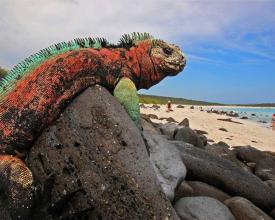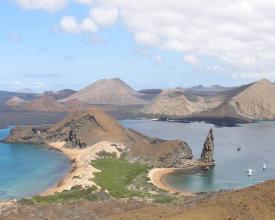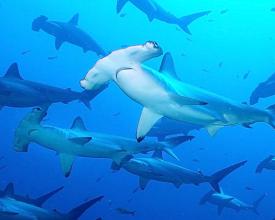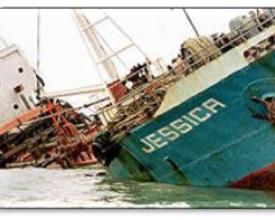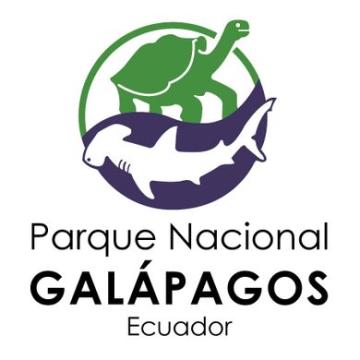
Creation of the Sustainable Investment Fund of the Galapagos Marine Reserve
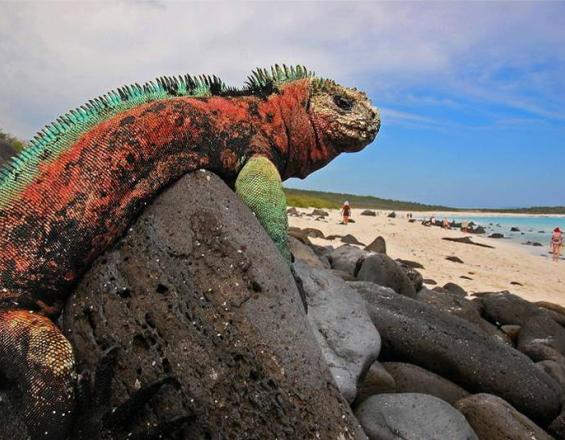
The GNPS updated the value of the Tourist Operation Patent (annual permit to operate in the GMR, which had not been updated for more than 20 years). This value is updated each year based on the unified basic salary SBU in force in Ecuador, the formula multiplies the Net Registration Tonnage of the vessel by 80% of the SBU. The state charged 492,000 USD for 162 tourist vessels, with the increase the charge will be progressive, in 2018 will be collected 1'902,847 USD; in 2019 2'885,540 USD; and from 2020 3'915,312 USD. The trust will decrease the financial dependence on the State for the control of the GMR, with the capitalization will generate financial sustainability. This seed capital will be covered 50% by the State and will be financed by patents. The other 50% will be covered by cooperation funds. The trust will have a capitalizable fund of 20'000000 USD, which will generate an average interest of 1'400000 USD per year, thus allowing the financing of the activities of the GMR.
Context
Challenges addressed
The main challenges of the solution presented are:
Capitalize at least $20 million;
Contribute to the fulfillment of the objectives of the Marine Reserve Management Plan;
Maintain financial sustainability to cover the needs of the GMR (Galapagos Marine Reserve);
Maintain worldwide recognition for the good management of the marine reserve;
Extend the 40-mile marine reserve.
Location
Process
Summary of the process
The creation of this fund is intended to protect the value of its capital over time through investments. Then, the seed capital of said fund will be covered by the Ecuadorian State in 50%, and will have as a source the increase in the collection of the aforementioned patents. The act was solemnized with the signing of the Ministerial Agreement that was signed during the month of August 2018 by the Minister of the Environment. The remaining 50% will be covered by national and international cooperation.
With this background, the GNPD (Galapagos National Park Directorate) is in the legal and financial process for the creation and constitution of this fund, thanks to this significant increase in collection that represents an important income for the fiscal coffer.
After the socialization of this fund with different non-governmental organizations, they demonstrated their interest in contributing to its seed capital.
Building Blocks
Increase in the collection of tourist operation patents
The reasons that prompted the process of updating the fee were:
- 20 years without updating the value of the tourist operation patent fee:
- It was derisory compared to the income that tourism operators receive;
- The cost of administration and management of the reserve where users benefit from its environmental services;
Relevant aspects of the agreement reached to update the fee:
- Sociabilization with the tourism sector for payment agreements;
- 4-year negotiation process
- Different types of negotiations (larger and smaller depending on the type of tourism);
- The value is updated each year based on the unified basic salary SBU in force in Ecuador, the formula multiplies the Net Registration Tonnage of the vessel by 80% of the SBU;
- Payment facilities to the operator, i.e. the value can be paid in three installments.
- The Reserve has optimized its systems to make the collection order online and payment through bank transfers.
- Smaller vessels pay less
- The state charged 492,000 USD for 162 tourist vessels, with the increase the charge will be progressive, in 2018 will be collected 1'902,847 USD; in 2019 2'885,540 USD; and from 2020 onwards 3'915,312 USD.
Enabling factors
- Socialization with the tourism sector and other stakeholders;
- Political will;
- Quality technical report;
- Dissemination of management issues and needs of the reserve, community and key stakeholders;
- The reserve's zoning process was created and socialized with the different users;
- It was accepted by the tourism operators because they themselves were aware that the increase was necessary for good management of the reserve, meaning the conservation and preservation of the zones in which they operate.
Lesson learned
- That processes that are socialized and negotiated with key stakeholders from the outset bring fewer problems in their implementation;
- That decision making with quality technical reports support the decisions taken;
- Despite the high turnover of the highest authorities, the project had to be presented on several occasions to be approved by the current authority;
- Despite the political will, the process has to be carried out in a technical manner and not get involved in the political arena;
- The government itself realized that it is a process that can be replicated in other issues.
Creation of the Environmental Investment Fund for the Galapagos Marine Reserve
The objective is to establish and capitalize a trust fund, which is anchored to the Sustainable Environmental Investment Fund (FIAS), in order to protect, preserve and conserve the Galapagos Marine Reserve (GMR), ensuring its financial sustainability.
The main long-term milestone to be achieved with this fund is to increase the 40 miles of the GMR. In addition, the fund will be used to develop and implement a plan for the prevention, conservation and preservation of the GMR. To achieve these milestones, three main programs were defined. However, two cross-cutting themes were identified as crucial to achieving good preservation and conservation of the GMR, namely Climate Change and Environmental Communication and Education.
The three programs are:
- Maintain and strengthen the Monitoring and Surveillance program of the GMR to protect the marine heritage;
- Guarantee the conservation of the GMR and its ecological integrity, through monitoring and research for the rational use of its environmental goods and services;
- Contribute to the development and implementation of the Emergency Plan for the GMR.
Enabling factors
- The updating of the value of tourism operation patents;
- In Ecuador there is a Sustainable Environmental Investment Fund (FIAS) that will allow us to create this GMR fund under its umbrella;
- The existence of a Galapagos Invasive Species Fund, anchored to the FIAS, is an example of success for the creation of the marine reserve fund, providing confidence for investors.
Lesson learned
- The creation of this type of fund helps to mitigate the instability of financing by the State and external cooperation;
- In negotiations with external cooperation to seek their willingness to invest in this fund, or help in the search for donors for it, it has been well received in this environment due to the factor of sustainability over time;
- The State, through its Ministry of Finance, has positively received the GNPD's initiative to implement the fund;
- One of the main barriers that had to be overcome was political instability. However, as explained in the previous building block, the technical nature of this project outweighed the political.
Impacts
The increase in the value of tourism operation patents allows the GNPD (Galapagos National Park Directorate) to have greater financial autonomy and therefore greater operational capacity.
However, this source of financing, when invested in a trust fund, reduces dependence on the state and external cooperation and guarantees financial stability for the control and surveillance programs of the GMR (Galapagos Marine Reserve), thus allowing for long-term sustainability and the possibility of expanding the GMR in the near future.
Currently, with the funds collected from tourism operation patents, a plan is being developed for the prevention, conservation and preservation of the GMR, with the cross-cutting theme of Social Participation, Communication and Environmental Education, which includes the following programs:
Maintain and repotentiate the GMR Control and Surveillance program to protect the marine heritage;
Guarantee the conservation of the GMR and its ecological integrity through monitoring and research for the rational use of its environmental goods and services;
Contribute to the development and implementation of the Emergency Plan for the GMR;
Mainstreaming Climate Change activities in the GMR.
Beneficiaries
The users of the environmental services of the marine reserve (local population, fishing sector, tourism, scientists, among others).
Different ecosystems of the archipelago (endemic and native flora and fauna).
Present and future generations.
Sustainable Development Goals
Story
The Galapagos National Park Directorate (GNPD), as the governing body of environmental policy in the islands and a public institution, decided to create this fund because it has been in financial crisis several times due to a lack of budget to meet the needs of the Marine Reserve.
These needs are especially acute when there are unexpected problems or accidents such as ship sinkings. The most notorious cases were the sinking of the ship Jessica, in 2001, which spilled 150 thousand gallons of fuel; and the sinking of the Galapaface, in 2015, which caused expenses that exceeded 10 million USD in each case and a significant environmental impact on marine ecosystems, as well as on the local economy. Another problem is the intrusion of fishing vessels; as was the case of the FU YUAN YU LENG 999, a Chinese flagged vessel, which had more than 600 tons of shark fishing and other species categorized in the IUCN red list of endangered species.
For both cases, this trust fund will mitigate, to a large extent, the expense that the GNPS would have to cover in the event that this were to happen again and will help preserve and conserve the exceptional unique value that the marine reserve possesses, recognized by UNESCO.
Another of the premises that motivated the creation of this fund was that Galapagos had been receiving funding from a donor for about 8 years for needs not covered by the State. This donor will contribute until 2019 and will no longer contribute to Galapagos. This is because its field of cooperation will change its mission to another part of the world, leaving several processes in place but without the financial sustainability to maintain them over time. This is the case of the VMS and AIS surveillance systems, which are radio and satellite monitoring systems that allow monitoring and surveillance of illegal activities, such as poaching and trafficking of exotic species, among others.
Another priority of this fund will be the monitoring of fauna, ecological and oceanographic systems, and research on extractive resources, as well as strengthening the productive fishing system and improving and promoting water quality projects. In addition, it is intended to protect the health and life of our park rangers divers, since at the moment they lack health and life insurance because they are a public institution.
